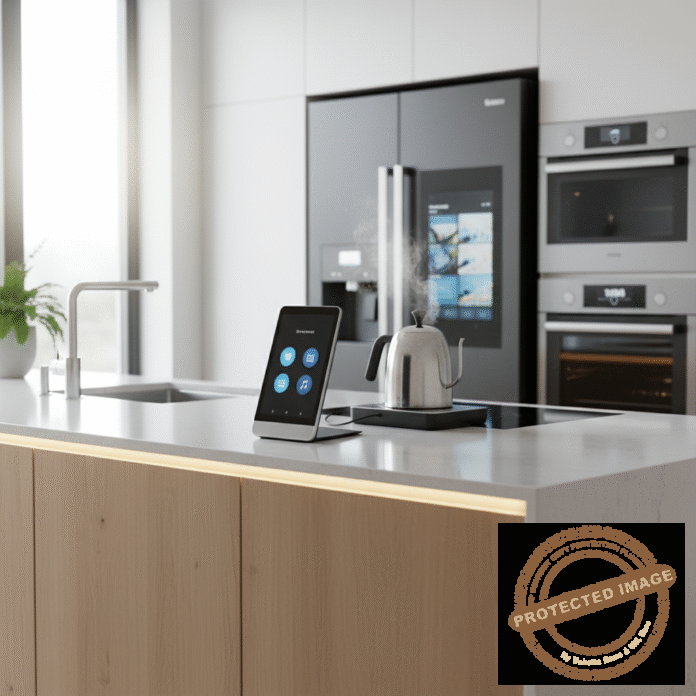From phone chargers to EV garages, wireless power transfer is accelerating — here’s what industry players and consumers need to know.
Imagine arriving home, placing your smartphone on the side table, and within moments it begins to charge — with no visible cable, no fuss. That scenario is rapidly becoming everyday reality, thanks to advances in wireless power transfer (WPT). What began as convenient smartphone charging is now evolving into a full‑blown transformation of how energy is delivered — to wearables, appliances, vehicles, and even rooms. According to market research, the global wireless power transfer market is projected to reach US $4.29 billion in 2025 while growing at a CAGR of about 27.6% from 2025 to 2033.
As consumers and tech‑ecosystems demand seamless, cable‑free power, wireless energy is shifting from novelty to necessity.
Trend Analysis
Several key trends are defining the wireless power landscape today:
-
Near‑field dominance, but long‑range potential brewing. Near‑field technologies (inductive, resonant) currently represent the largest share — near‑field holds an estimated 88.4% of the market in 2025. Meanwhile, emerging far‑field and beam‑based systems hint at future breakthroughs for room or building‑scale power transfer.
- Multiple devices, multi‑standard ecosystems. Wireless charging is no longer just single‑device pads. Platforms that can charge smartphones, wearables, laptops—or even EVs—simultaneously are gaining traction. According to a June 2025 report, the “race to wireless” emphasises multi‑device, multi‑standard platforms as key.
- Cross‑sector penetration: consumer → automotive → industrial. While mobile and wearable electronics are leading today, wireless power is increasingly applied in smarter homes, logistics, robotics and automotive charging infrastructure.
- Efficiency, standards and sustainability in focus. With more adoption comes scrutiny around losses, standard‑compatibility and environmental impact. For instance, advanced coil designs show leakage reduction of up to 86% while hitting 96% efficiency in lab settings.
- Regional growth and leadership. North America is expected to dominate with approximately 38.5% share in 2025, while Asia Pacific is the fastest‑growing region thanks to strong EV/charging infrastructure initiatives.
Expert Commentary
Industry analysts emphasise that wireless power isn’t just about “cordless chargers” anymore—it’s about creating ambient energy ecosystems. One insight: the convergence of materials science, power‑electronics and smart controls is what’s driving true wireless energy systems. Another research study highlights how new resonator designs allow room‑scale power transfer: a 3 m × 3 m × 2 m test achieved over 37% efficiency using cavity‑based multimode resonators. The message: The future competitive edge will not only be in “how much” power you can transfer, but also “how smart, seamless and safe” the experience is.
Use Case
Consider a modern Montreal‑based smart‑home scenario:
A homeowner integrates a wireless power system into their living space. Under the coffee table and side tables are embedded induction‑resonant transmitters. Smartphones and tablets placed casually in the room charge automatically. A wearable health tracker charges on a bedside pad. Meanwhile, the garage features a floor‑mounted coil array that enables wireless EV (electric vehicle) charging—no plug‑in required; simply parking aligns the vehicle and wireless charging begins. The smart home hub monitors each device’s state, prioritizes charging for essential systems (e.g., medical or security wearables) and balances loads to avoid grid spikes. The homeowner benefits from a near‑cordless lifestyle, improved convenience, fewer physical connectors, and future‑ready expansion (e.g., robotics, home appliances) without rewiring. This holistic use case illustrates how wireless power evolves from gadget convenience into a connected‑infrastructure model.
Future Outlook
Looking ahead, several milestones will drive transformation:
-
Room‑ and building‑scale wireless energy systems. Research shows near‑field beam‑focusing and large‑aperture transmitters could enable practical wireless power delivery in larger volumes. arXiv
-
Wireless power becomes infrastructure. Wireless charging embedded in furniture, cabinetry, even floors/vehicles will make “plugging in” optional. The 2025 “race to wireless” report projects public spaces, logistics hubs and homes to adopt such systems. Reportsnreports –
-
Standard‑and ecosystem convergence. As standards like Qi evolve (e.g., free‑positioning, multi‑device support), user experience will improve markedly. arXiv
-
EV wireless charging gains scale. With electrification accelerating, wireless high‑power charging (200 W+, maybe kWs) for vehicles will move from demonstration to deployment. Market Research Future
-
Sustainability & circular design become imperative. Wireless power systems must emphasise efficiency, minimal waste, and long‑lifetime infrastructure to align with broader environmental goals.
Closing Thoughts
The era of wireless power is no longer confined to “phone on a charging pad.” It’s moving rapidly toward ambient energy infrastructure—homes, vehicles, wearables and beyond. For consumers, businesses and technology planners in places like Montreal, this means preparing for a plug‑free future: devices that charge automatically, environments designed to transmit power invisibly, and ecosystems that prioritise convenience, safety and sustainability. The key question isn’t if wireless power will matter — it’s how soon you’ll be living in a world where cords become relics and power becomes seamless.
References
-
“Innovation Trends in Wireless Power Transfer (WPT): Market Outlook 2025…”, Data Insights Market. https://www.datainsightsmarket.com/reports/wireless-power-transfer-wpt-84544 datainsightsmarket.com
-
“Wireless Power Transfer Market Share & Opportunities 2025‑2032”, Coherent Market Insights. https://www.coherentmarketinsights.com/industry-reports/wireless-power-transfer-market Coherent Market Insights
-
“Unplugged: Exploring the Present and Future of Wireless Power”, TaylorAmarel. https://tayloramarel.com/2025/01/unplugged-exploring-the-present-and-future-of-wireless-power/ tayloramarel.com
-
“The Race to Wireless: Trends Shaping Cordless Charging in 2025 and Beyond”, ReportsnReports. https://www.reportsnreports.com/semiconductor-and-electronics/the-race-to-wireless-trends-shaping-cordless-charging-in-2025-and-beyond/ Reportsnreports –
-
“Room‑scale magnetoquasistatic wireless power transfer using a cavity‑based multimode resonator”, Sasatani et al. (arXiv). https://arxiv.org/abs/2502.05891
Serge Boudreaux – AI Hardware Technologies
Montreal, Quebec
Peter Jonathan Wilcheck – Co-Editor
Miami, Florida
Post Disclaimer
The information provided in our posts or blogs are for educational and informative purposes only. We do not guarantee the accuracy, completeness or suitability of the information. We do not provide financial or investment advice. Readers should always seek professional advice before making any financial or investment decisions based on the information provided in our content. We will not be held responsible for any losses, damages or consequences that may arise from relying on the information provided in our content.



